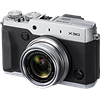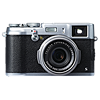Main
Model
Price
Advantages
launch
Announced
Body type
Camera subcategory
Sensor
Effective pixels
Max resolution
Sensor size
Sensor type
Processor
Image ratio w:h
Other resolutions
Image
ISO
White balance presets
Custom white balance
Image stabilization
Uncompressed format
JPEG quality levels
Boosted ISO (maximum)
Photography features
Minimum shutter speed
Maximum shutter speed
Aperture priority
Shutter priority
Manual exposure mode
Subject / scene modes
Built-in flash
Flash range
External flash
Flash modes
Continuous drive
Self-timer
Metering modes
Exposure compensation
AE Bracketing
WB Bracketing
Screen / viewfinder
Articulated LCD
Screen size
Screen dots
Touch screen
Screen type
Live view
Viewfinder type
Viewfinder coverage
Viewfinder magnification
Viewfinder resolution
Videography features
Resolutions
File Format
Microphone
Speaker
Optics & Focus
Focal length (equiv.)
Optical zoom
Maximum aperture
Autofocus
Digital zoom
Manual focus
Normal focus range
Macro focus range
Number of focus points
Physical
Weight (inc. batteries)
Dimensions
Environmentally sealed
Battery
Battery details
Battery Life (CIPA)
Storage
Storage types
Connectivity
USB
HDMI
Microphone port
Headphone port
Wireless
Wireless notes
Remote control
Other features
Orientation sensor
Timelapse recording
GPS
Samples
Videos
Summary
The X100S highest resolution of 4896 x 3264 pixels (16 megapixels) is better in comparison with the Fujifilm X30 highest resolution of 4000 x 3000 pixels (12 megapixels). The X100S is equipped with bigger sensor than the Fujifilm X30: APS-C (23.6 x 15.8 mm) versus 2/3' (8.8 x 6.6 mm). It is the most significant difference between these models because large sensor lets you to shoot pictures of the higher quality. The X100S has a wider ISO range of 200-6400 than 100-12800 ISO range of the Fujifilm X30. This ISO range let the photographer to shoot good quality pictures in more difficult situations. The Fujifilm X30 has more powerful 2x digital and 4x optical zooms.
The X30 has tilting LCD that will let you to shoot great selfie photos. The Fujifilm X30 display is better as it has more number of screen dots 920,000 in compare to 460,000 dots of the X100S screen. The higher dot count display is better for reviewing photos on your camera.
The X30 is equipped with built-in Wi-Fi that will help you to transfer pictures wirelessly from a camera to a PC. The Fujifilm X30 battery life is better than the X100S battery life. According to CIPA standards you will be able to capture 470 photos with the X30 and only 330 with the X100S. The X30 weighs 423g which is 22g less in comparison with the weight of the Fujifilm X100S.
Taking into account the above differences the Fujifilm X30 will be the best buy. Check the lowest price on Amazon.


